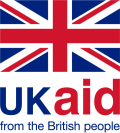You are here
Share
In Sao Paulo, Changing Agriculture Practices Prove Restoration Can Be Profitable


Submitted by Gregor Wolf, Program Leader, and Werner Kornexl, Senior Natural Resource Management Specialist
Cattle ranching and agriculture have been key drivers of deforestation and land degradation in Brazil, with land use practices that come at the expense of the environment and cause water scarcity, biodiversity loss and persistent poverty.
There’s no doubt that land and forest restoration to repair ecosystems is urgently needed in Brazil. This is especially evident in the State of São Paulo, where water scarcity from a combination of an extended drought and degraded watersheds is threatening the urban metropolis of more than 20 million people. Unfortunately, because of perceptions that land restoration is prohibitively expensive, interventions have been slow.
However, during a recent mission to Sao Paulo we saw with our own eyes that change is underway. There is also new evidence that locally developed agroforestry practices offer financially viable production systems while restoring soil and vegetation cover at scale.
Fazenda da Toca, a private enterprise in São Paulo, is demonstrating the viability of large scale organic farming and agroforestry, including on land with highly degraded soils. Toca could effectively end the myth that agroforestry is not viable at a large scale, that it’s too expensive and too labor intensive to be attractive to the private sector.
Fazenda da Toca is on track to demonstrate that their agroforestry practices not only restore degraded areas but are more profitable than conventional agricultural practices. What’s the secret to their effectiveness? Very simply, it’s not a single approach or technique. Rather, it’s a combination of interventions, sequenced smartly, that are yielding winning results. Degraded soils are stabilized with different grass species to augment organic matter, fast growing exotic species provide biomass and shade, while fruit trees and high value native timber species generate cash flow and long-term returns. Following these principles – in multiple variations and approaches - agroforestry at Fazenda da Toca is already bankable without subsidies or other incentives, showing that agroforestry at scale is viable.
Fazenda da Toca also experiments with different technological innovations. For example, it has engaged in strategic partnerships to develop technologies and design equipment for mechanized agroforestry in partnership with local companies. This approach reduces costs and builds national networks to disseminate techniques and financially viable land use models, thereby setting the stage for broad adoption of this approach.
Recently the Climate Coalition in Brazil – a coalition of more than 100 private partners, large companies and NGOs – organized an event to discuss how to accelerate the scaling up of Toca’s model in the state and other areas of the country. The Coalition’s aim is to contribute to Brazil’s recent COP21 commitment to confront the country’s land and resource degradation problems and help to deliver, by 2030, Brazil’s target of restoring 12 million hectares of degraded land, restoring an additional 15 million hectares of degraded pasture land and enhancing an additional 5 million hectares of crop-livestock-forestry systems.
One of the main outcomes of this unique process, which has also learned from successful industrial scale forest plantations in the South of the country, is that restoration must not be dissociated from productive agroforestry or productive agrosilvopastoril systems; i.e. the process ought to provide cash income to farmers early in the process, while restoring soils and ecological functions.
Fazenda da Toca’s experience of scalability offers an important case study for the implementation of the Bonn Challenge, whose aspirational goal is to restore 150 million hectares of the world's deforested and degraded lands by 2020, and 350 million hectares by 2030. To date, 31 nations have stepped forward to commit to restore degraded areas and meet the challenge. However, there are only a few places where such a concerted effort of different partners is underway, buttressed by evidence that large scale restoration is financially viable.
Brazil’s advanced regulatory framework and Forest Code provide the context for such a challenging target. However, adequate finance, availability of seeds, markets, knowledge of the genetics and silvicultural practices for native species, and the financial viability of emerging technologies have yet to be addressed. Experiences such as at Fazenda da Toca give us hope that Brazil may indeed scale up restoration, complying with the restoration goals mandated in the forest code as well as meeting the commitments put forward in its Nationally Determined Contributions at COP21.
For stories and updates on related activities, follow us on twitter and facebook, or subscribe to our mailing list for regular updates.
Last Updated : 12-19-2016








